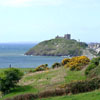 | ||||||||||||||||||||||||||
|
 |
Photograph © Leon Arndt |
|
Comments |
| [Home] [Food & Drink] [Symbols] [Sport] [Products] [Places] [Buildings] [Artists] [Entertainers] [Events] [Famous Welsh] [Journalists] [Musicians] [Politicians] [Songs] [Writers] [Welsh Info] [About Us] [Vox Pop] [Site Map] [Contact Us] [Forums] [Our Sponsors] [Welsh Produce] |
All copyrights acknowledged with thanks to Wikipedia. Another site by 3Cat Design 2006-2007 |
|





